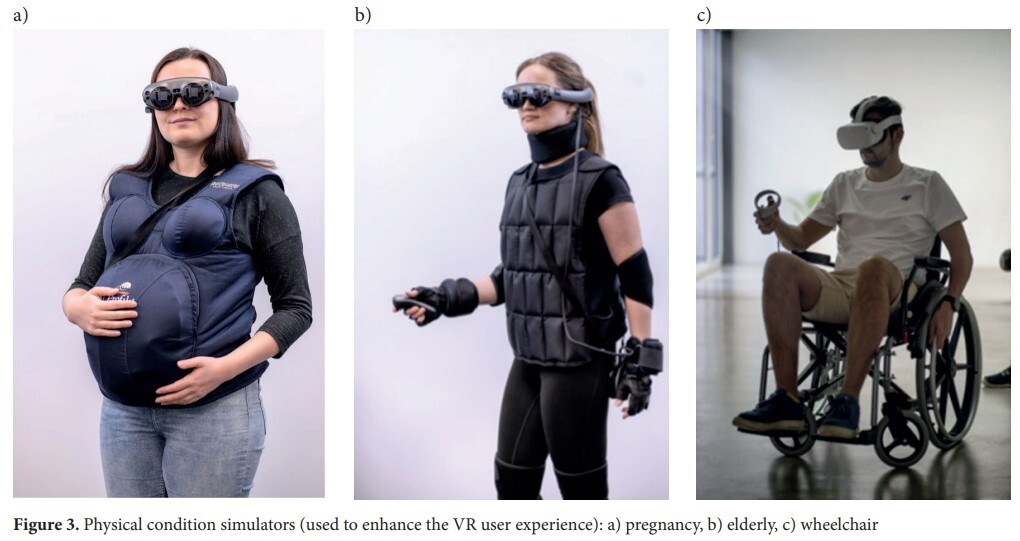Online first
Current issue
Archive
Most cited in 2024
About the Journal
Editorial Office
Editorial Board
Copyright and self-archiving policy
Information clause on the processing of personal data
Declaration of accessibility
Instructions for Authors
Instructions for Reviewers
Contact
Reviewers
2024
2023
2022
2020
2021
2019
2018
2017
2016
2015
2014
2013
Editing and translations
REVIEW PAPER
Enhancing empathy through virtual reality: Developing a universal design training application for students
1
Lodz University of Technology, Łódź, Poland (Institute of Mechatronics and Information Systems)
2
University of Tartu, Tartu, Estonia (iCV Lab)
3
Polytechnic Institute of Porto, Porto, Portugal (School of Engineering, Department of Physics)
Online publication date: 2023-07-07
Corresponding author
Grzegorz Zwoliński
Lodz University of Technology, Institute of Mechatronics and Information Systems, Stefana Żeromskiego 116, 90-537 Łódź, Poland
Lodz University of Technology, Institute of Mechatronics and Information Systems, Stefana Żeromskiego 116, 90-537 Łódź, Poland
Med Pr Work Health Saf. 2023;74(3):199-210
KEYWORDS
TOPICS
ABSTRACT
The lack of empathy towards disability is a significant societal issue that hampers inclusivity and understanding. Many struggle to comprehend the daily challenges and experiences faced by people with disabilities, leading to ignorance, prejudice, and exclusion. However, empathy plays a pivotal role in addressing this problem and serves as the foundation for developing and creating better products, services, and environments. This article explores the potential of developing virtual reality (VR) applications to enhance students’ empathy towards individuals with disabilities. By increasing empathy levels, students are expected to gain significant qualifications in universal design (UD). The full application development process covers the most suitable head-mounted display (HMD) set. The implementation methodology using the Unity programming platform, the approach adopted for conducting classes using the developed VR application, and the deployment stage. Testing was successfully conducted on a student population, receiving positive user feedback. Through the integration of VR technology, the authors thoroughly describe how to address the empathy gap and equip students with essential skills for inclusive and accessible design. The findings presented in this study provide valuable guidance for educators and developers interested in harnessing VR’s potential to foster empathy and advance universal design practices. With the presented methodology and proposed application, the authors demonstrate the effectiveness of VR applications in elevating students’ empathy levels, consequently enhancing their qualifications in universal design. Med Pr. 2023;74(3):199–210
Share
RELATED ARTICLE
We process personal data collected when visiting the website. The function of obtaining information about users and their behavior is carried out by voluntarily entered information in forms and saving cookies in end devices. Data, including cookies, are used to provide services, improve the user experience and to analyze the traffic in accordance with the Privacy policy. Data are also collected and processed by Google Analytics tool (more).
You can change cookies settings in your browser. Restricted use of cookies in the browser configuration may affect some functionalities of the website.
You can change cookies settings in your browser. Restricted use of cookies in the browser configuration may affect some functionalities of the website.






